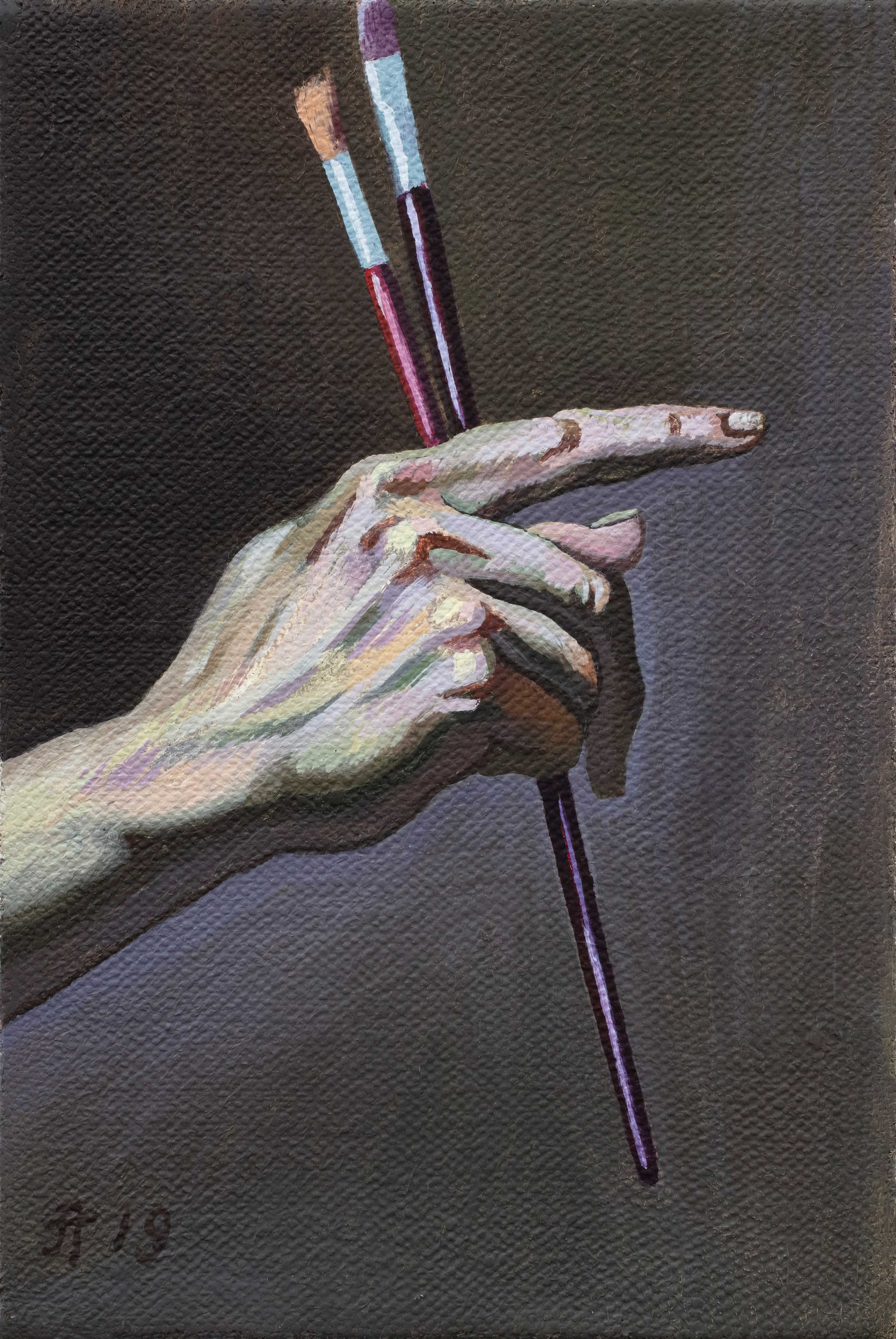
“Where are you going?”
This is a question with two connotations, among which, “you” means both the painting and the artist himself. The exhibition, themed by a question, will introduce individual responses of QI Wenzhang, presenting the artistic goals that he pursues in the continuous self-examination. Meanwhile, the literary expression also indicates the obsession of the painter. All the time, reading nourishes his spirit and creation.
“Paintings come from pictorial heritage.”
This is the working logic of QI Wenzhang. For quite a long time, he regarded the pictorial heritage of painting history as his creative material. After translation and reconstruction, the old images are transformed and endowed with new meanings. On the other hand, the study in the language of modern painting is one of his priorities. He develops his personal style based on the formal experience of painting history. He often presents dramatic themes through large-sized paintings and integrates his feelings about the reality into the composition. This tendency is increasingly strong in his recent works. His small-sized works, however, return to the study of simple language, with more embodiment of the paintings. Together, they constitute his creative system.
“A plate of fruit is also a legend in the eyes of the painter.”
A Few Fruits, it bears such a simple name and such an ordinary theme. The painting is not large in size, but reveals the painter’s attentiveness. The filled fruit in the silver dish is shaped quite differently. The artist presents lake surface, distant mountains and the sky as the background, where the thin paint seeps into the linen texture, stable and breathable. The brush strokes are light and loose, creating visual effect of flat color blocks. Such a technique conceals the specific appearance of things, but reveals the original texture of the painting. And the curves of those lines exude such a special aura that keen sense organs can distinguish the difference, but words cannot serve as its signifiers. The audience, if knowing the history of modern art well, may be able to find the undiffused soul.
“The painter is a monkey.”
This is the unexpected feeling of the artist. To this end, he created the Monkey-Painter. Three years ago, when I saw these paintings, the black humor pierced my skin like a burr. This secret sting assures me that the painter is an expert at using visual metaphors. But I also doubt that the Monkey-Painter is more a self-portrait than a professional metaphor. What it represents is a kind of modernism wildness against modernity. Today, the “new savage” has been a compliment for those legendary painters in the history of modern art. QI Wenzhang’s use of this metaphor may mean his active spiritual alienation from others, revealing a complex emotion of self-esteem.
“He who salutes and he who is saluted are combined in one.”
QI Wenzhang seems to never look away from himself. In an earlier period, he painted numerous self-portraits. Like the paradigms of the aged master, those self-portraits present his own images, even psychoanalytically examination, in rectangular frames at close range. This kind of constant and intense self-focus often makes his other portraits like self-portraits. For him, the metaphor in painting has become a rhetorical strategy of self-writing. In his recent work Hello Gauguin, we can better understand the multiple meanings of his portrait for the master.
He created three portraits of Gauguin in succession. In these paintings, the protagonist has unruly beard and long hair, and his eyes reveal pride. There is no change in the visual angle of the paintings or in the dress of the character. If comparing them, we can see the change of Gauguin’s expression, which is not the natural state from the perspective of others, but more like the posture adjustment in front of a mirror. Self-portrait-style desire of expression fills the paintings, and the image painted by the painter is not only the protagonist, but also the painter himself. In the foreground of the three works, abundant things are presented on or around the table-- wine, meat, flowers, fruit and women, which naturally evoke the traditional visual memory of painting, and are also the desire of the painter exposed by himself.
“March in reality and dream.”
On a road to the distant horizon, with no houses around, the barefoot painter sets up his easel by the roadside, wondering how to capture the scene before him. Here, the wind and light, as the messengers of fairy descending upon the earth, play music for the painter, integrating nature and rhythm. The two ballerinas, naked, are absorbed in their own movements, and the boy, who is doing one-handed flips, tries to compete for attention.
Painter with No Name is a painter’s dream as a painter. Such scene is not the one for his creation. Like most professional painters, QI Wenzhang follows the logic of artistic ecology and lives in a metropolis with concentrated culture. He conceives and creates his works in his studio and plans the schedule for the exhibition. However in his paintings, we can see his inner world--a romantic soul searching for the Bohemian life of the artist. The legend he pursues only exists there.
Still life—portrait—life: the painting of QI Wenzhang is a kind of spiritual compensation for reality.
2020.11.22 Beijing
